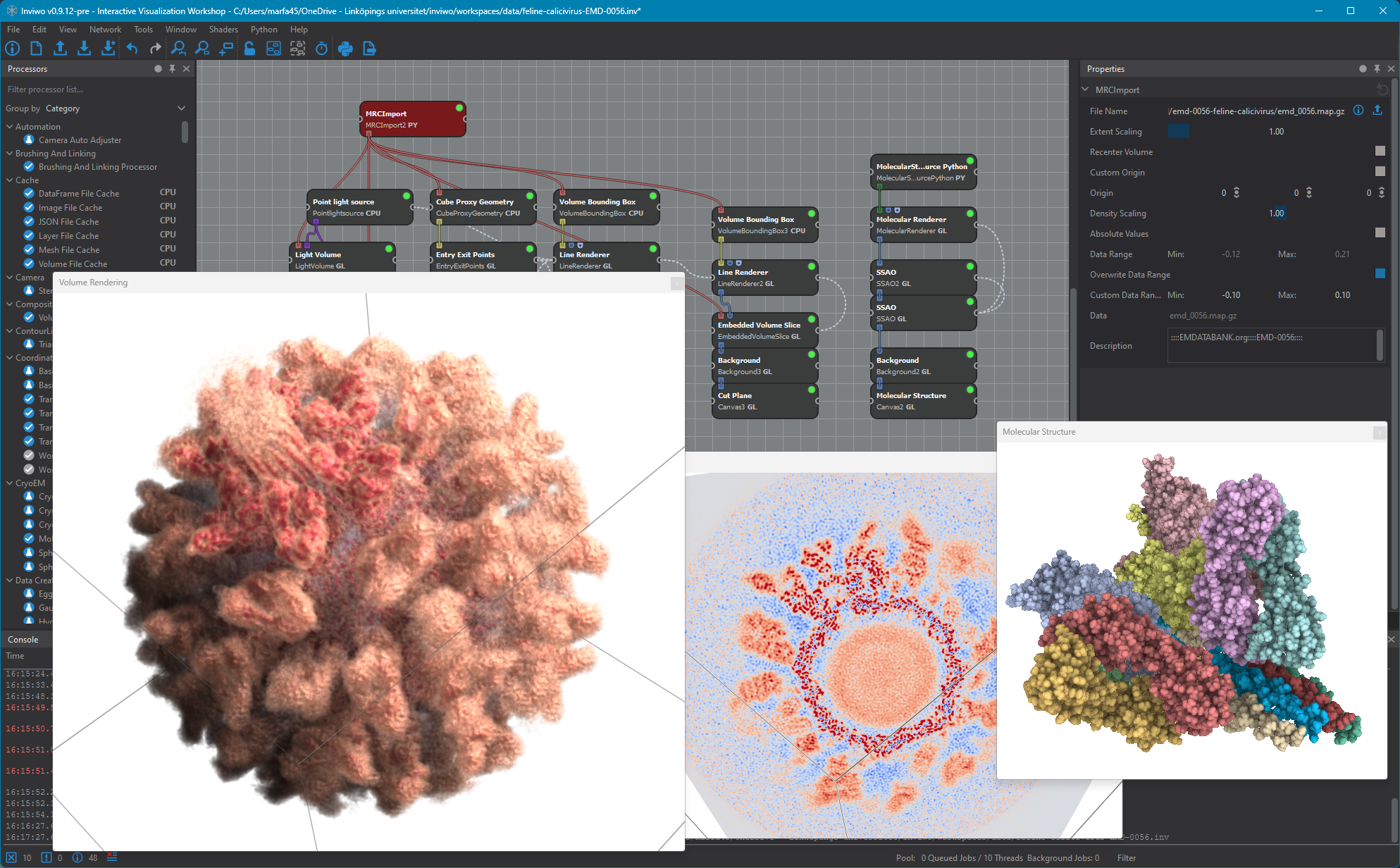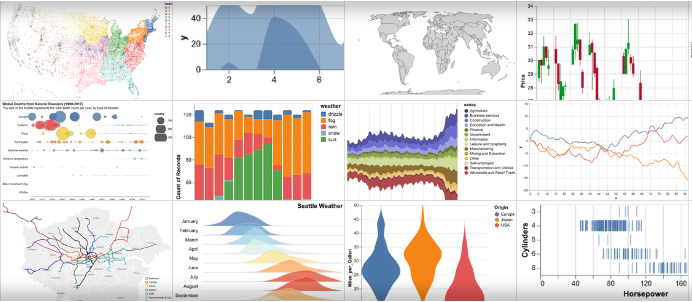Tutorial on Spatial Data Visualization with Inviwo
Time: 2 hours, precise time TBA
Time: 2 hours, precise time TBA
Martin Falk

Abstract:
Inviwo is a rapid prototyping framework for visualizing spatial and abstract data. In this tutorial,
we show how Inviwo can be utilized for easily creating visualizations in the biomedical domain.
We provide an overview of the concepts used in Inviwo like its visual network editor and the associated data flow paradigm.
Several hands-on examples illustrate how to import data and build your own visualization networks.
The tutorial is tailored to beginners – no prior experience with the framework is necessary.
Inviwo is available at https://inviwo.org and Github.
Martin Falk
is an Associate Professor in the Scientific Visualization Group at Linköping University.
He received his Ph.D. degree (Dr.rer.nat.) from the University of Stuttgart in 2013.
His research focuses on the development and utilization of visualization techniques, like volume rendering,
topological analysis, and GPU-based methods in general, tailored to specific applications in various application
domains including cryo-EM, material science, plasma physics as well as the medical domain. He is also a core
developer of the visualization framework Inviwo.
Tutorial on Vega-Altair: Declarative Visualization in Python
Time: 3.5 hours, precise time TBA
Time: 3.5 hours, precise time TBA
Laura Garrison, Pere-Pau Vázquez

Abstract:
Vega-Altair is a declarative visualization library for Python. Its simple, friendly and consistent API, built on top of
the powerful Vega-Lite grammar, empowers you to spend less time writing code and more time exploring your data.
Lear more at https://altair-viz.github.io/.
Laura Garrison
is an associate professor (tenure-track) of visualization in the Department of Informatics at the University of Bergen,
and a trained medical illustrator. With her team, she studies processes and assumptions designers make when crafting
visualizations, and their impact on audience engagement and behavior, with a special interest in the health and life
science domains. For her work on multiscale visualization of human physiology, she was awarded the Dirk Bartz Prize
for Visual Computing in Medicine in 2023 and the Karl-Heinz Höhne (MedVis) Award in 2021. Prior to her PhD, she worked
as a medical artist and content director in medical education technology start-ups in Chicago, Silicon Valley,
and New York City.
Pere-Pau Vázquez
is an associate professor at Universitat Politècnica de Catalunya. He holds a PhD in software (computer graphics)
and is currently affiliated to the ViRVIG (visualization, virtual reality and graphical interaction) group and the
CREB center (center for research in biomedical engineering). His current interests are scientific visualization,
information visualization, virtual reality, and applications of deep learning to visualization.
Collaboration & Networking
Time: ~1 hour, precise time TBA
Time: ~1 hour, precise time TBA
Organizers
One of the best things about summer schools is meeting new people. We hope that this one
will not be an exception. The school is open to attendees with diverse expertise/interest areas spanning biology, medicine, and visualization.
This means there is a unique opportunity to learn from one another, look at the biomedvis problems from different perspectives, and
maybe even build future collaborations. In this session, you will get a chance to discuss and work together with fellow
summer school attendees, focusing on biomedical visualization problems either brought by participants themselves or provided by organizers.
Note: Since the nature of this session strongly depends on the expertise/interest areas of the attendees, it is subject to change. We will tailor the contents of the session
and activities to the profile of registered attendees.

